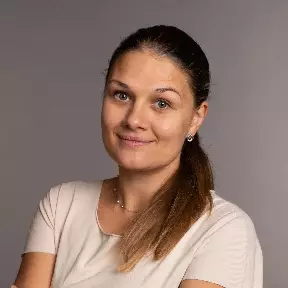Dive in the algorithms from the clinical practice!
Pericardial tamponade
Deana Slovjaková, Jana Šimčíková, Ivana Diešková, Tamás Komlósi
Pericardial tamponade is a serious life-threatening condition whose early recognition is crucial for the patient. Therefore when an unfortunate accident happens, it is possible that even a traditional hunting session becomes a battle for life. Pericardial tamponade is one of the so-called "4T" reversible causes of sudden cardiac arrest, and in this algorithm we will guide you through its differential diagnosis and therapy, from prehospital care to definitive hospital treatment.
Dog bites
Tereza Prokopová, Aneta Mrkvičková, Terka Šiprová, Katka Šalandová
Animal bites are a common injury, especially in children. They have a wide scale from small scratches to amputations. Because of the risk of the infections, special care and treatment is needed, different than in any other injury. In our algorithm we focus on dog bites, because that is the most common case. Algorithm has two different branches describing a situation with both rabies vaccinated and non vaccinated dog.
Transportation of pathological newborn
Martin Vavřina, Martin Janků, Kateřina Machanová, Tereza Urbánková
Childbirth is a common part of human life and it can unfortunately be accompanied by complications of the mother or child. In our algorithm, we will look at the prolonged birth of twins, after which it will be necessary to evaluate the condition and decide on the transport of one of the children. Where to transfer a pathological newborn to be provided with adequate care? How to proceed in securing vital functions along the way? How to react to the deterioration of the condition? If you do not know the answers to these questions, we believe that after mastering our story, you will be prepared for such situations.
Burn in pediatrics
Eva Klabusayová, Tereza Kramplová, Alena Brančíková, Aneta Vomelová
Burns are serious painful injuries. The severity of burn injury depends on the extent, location and the degree of burns. Therapy and subsequent recovery is long. The most common cause of burns in children is heat damage to the skin. The algorithm will comprehensively guide you through all the steps of the treatment of burn injuries in children, from the first aid and pre-hospital care to the anaesthesiology and surgical care of a burnt child.
Regional anaesthesia in children
Tereza Musilová, Martina Kosinová, Anna Hrazdírová, Tereza Štenclová
Peripheral nerve block, as part of a multimodal approach to the treatment of pain, is already a standard part of anaesthesiology care not only in adults but also in pediatric patients. The basic condition for the implementation of peripheral blocks is a perfect knowledge of the topographic anatomy of the area, which together with the use of ultrasound methods allows to minimize possible risks. The aim of the algorithm is to approach the specifics of performing peripheral blockades in children. It shows the advantages that allow a small patient to access the stay in the operating room and in the postoperative period, with emphasis on the adequate effect of postoperative pain.
Psychological preparation of children for surgery
Miroslav Světlák, Tereza Stepaková
Research shows that 40 % to 60 % of children, especially of pre-school and early school age, experience anxiety and stress before a surgery requiring general anaesthesia. Subsequently, some of them show post-traumatic stress symptoms, which continue to affect the child’s overall condition, recovery, and compliance with any other medical care. Children under seven years of age are considered to be the most endangered group. Several preventive measures can be taken that reduce the risk of developing a post-traumatic stress response. This algorithm endeavours to draw healthcare professionals’ attention to the critical points of the entire procedure of preparing a child for the surgery under general anaesthesia in terms of psychology, that can help children better manage medical intervention.
Toxic shock syndrome
Petr Štourač, Tamara Skříšovská, Madita Binder
Septic shock is a life threatening condition which needs quick intervention. The treatment and differential diagnosis of septic shock might appear to be quite challeging, but is essential for an optimal outcome for the patient. This algorithm will give a insight into the managment of septic shocks, the differential diagnosis, possible error sources in the diagnosis and characteristics of microbes, that cause shock.
Intraabdominal infection and acute abdomen
Petr Štourač, Tamara Skříšovská, Hiroko Martin
Acute abdomen refers to a heterogenous group of urgent conditions characterized by the sudden onset of severe abdominal pain. The spectrum of disease encompassed within this term may cause diagnostic difficulty, owing to the considerable diversity in the underlying etiology, which includes, among others, obstructive, inflammatory, vascular, infective, and gynecological processes. Infective intraabdominal processes in particular are a serious cause of mortality and present a unique clinical challenge due to the evolutionarily dynamic nature of the pathogens and the potential for progression of infection beyond the original infectious foci. As a result, diagnosis and management of patients with suspected intraabdominal infections is contingent on obtainment of a comprehensive history, structured evaluation, timely intervention, and prompt initiation of empiric therapy, followed by adjustments in antimicrobial therapy once the causative organism has been identified, if necessary.
Patient with COVID-19 in the hospital
Olga Smékalová, Kateřina Hadrabová
Coronavirus Disease 2019 (COVID-19) is currently a global problem. Patients require specific care from initial treatment in emergency departments. Many patients with extensive bilateral pneumonia require hospitalization in the intensive care unit and are dependent on high-flow oxygen therapy. In some of them, despite all treatment, lung disease progresses to the form of acute respiratory distress syndrome with the need to be connected to mechanical lung ventilation. Adequate blood gas exchange often cannot be achieved by a protective setting of mechanical ventilation. Therefore, the physician must use the prone position and, in the most severe cases, also consider the extracorporeal membrane oxygenation support. The algorithm is divided into two parts, and the participant can decide whether he wants to take care of the patient with COVID-19 during emergency admission or play the role of an intensive care physician.
Structured Patient Handoff
Martin Kutěj, Hana Straková, Karolína Lečbychová, Markéta Bílená, Tereza Ekrtová, Vojtěch Jarkuliš
Structured passing of information about the patient and correctly doing patient handoff is very often considered marginal. However, the correct execution of these procedures significantly increases patient's safety and leads to better classification and passing on essential information. This algorithm aims to point out the possibilities of structured information pass on and safe patient handoff.


HUS
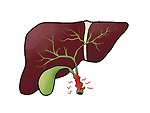
Cholangoitis

Structured Patient Han...
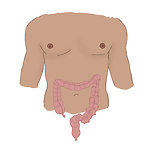
Intraabdominal infecti...
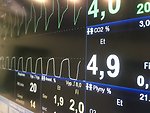
Capnography
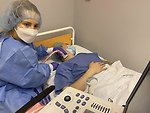
Regional anesthesia in...
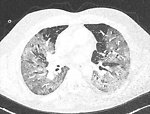
COVID-19 patient in th...
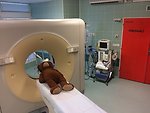
Neuroinfection

Burn in pediatrics
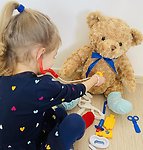
Psychological preparat...

Regional anaesthesia i...
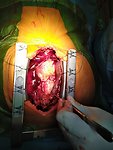
Pericardial tamponate
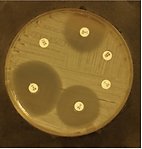
Toxic Shock Syndrome

Transportation of the...
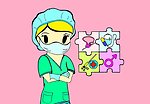
TURP syndrome

Dog bites

